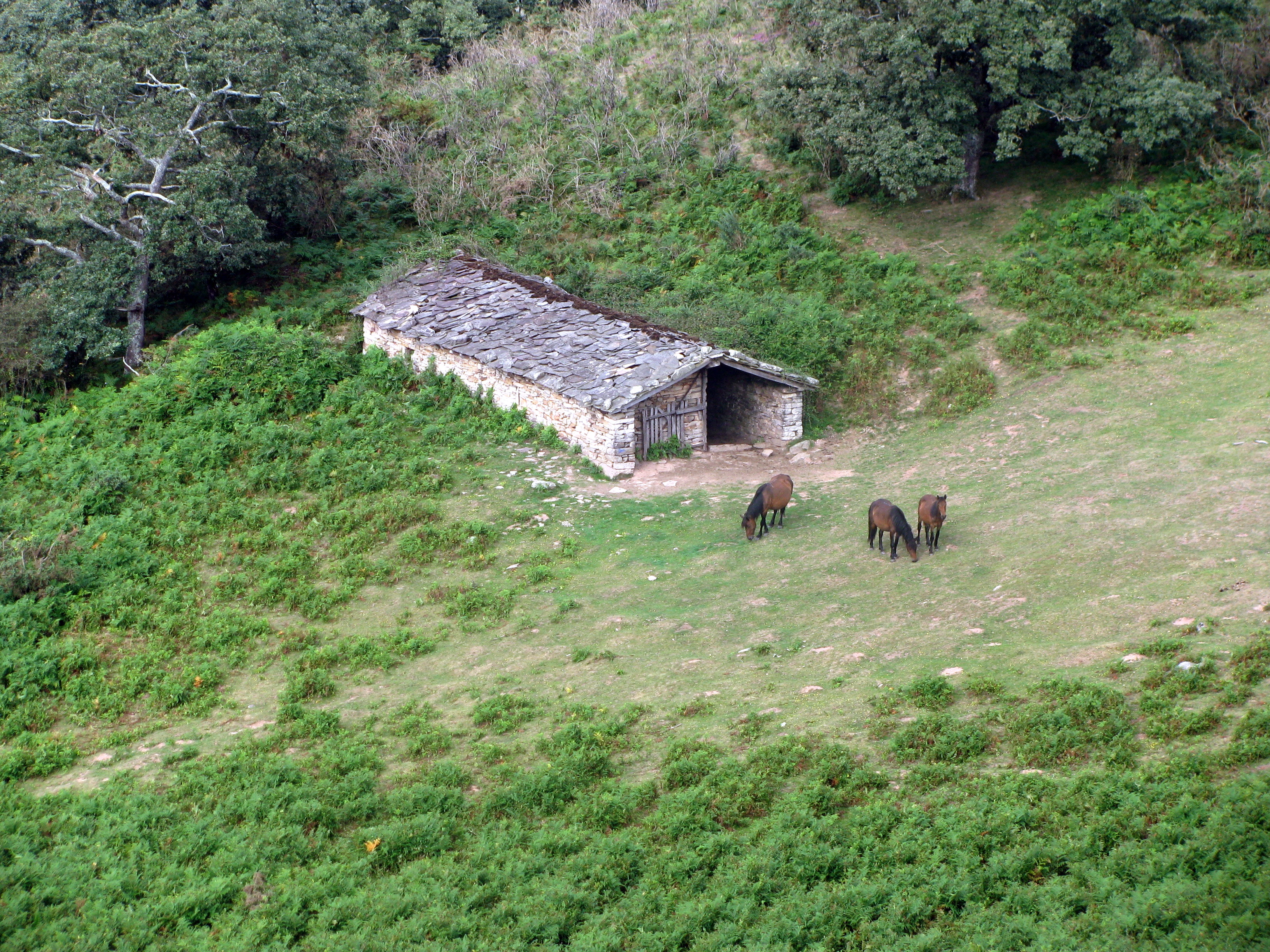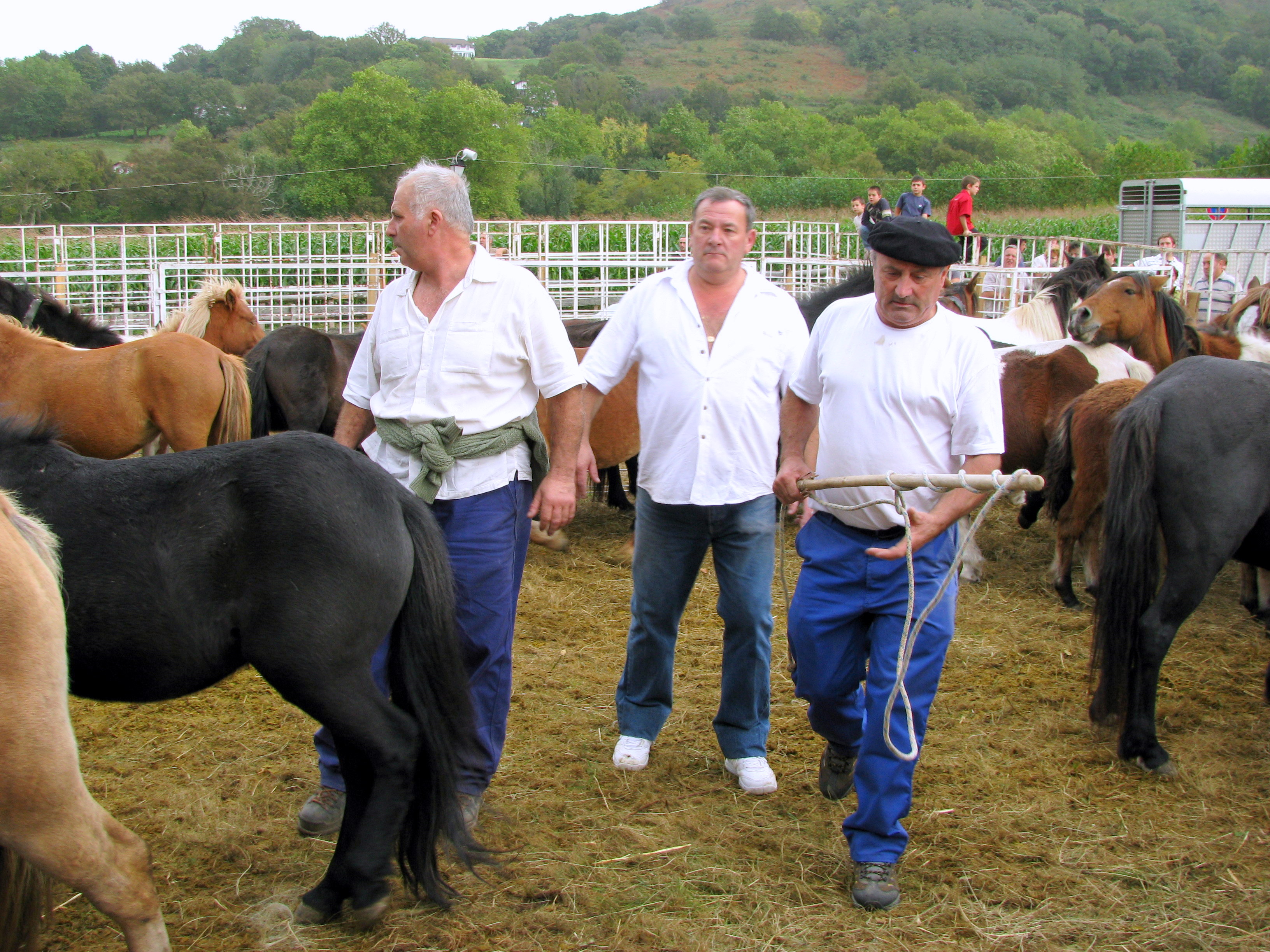Basque ethnography at a glance
Does the equine species found in prehistoric cave paintings represent the pottoka? Or is the pottoka the domesticated descendant of the horses introduced in the early centuries before Christ? Is it a breed according to the English model of the 18th century based on calibration standards? The population of pottokas is the result of centuries-old crossbreeding of Arab horses, military horses, smuggled horses… From Zuberoa to the farthest end of Bizkaia, different regional subtypes inhabit both sides of the mountain ranges. The ancestry of all such lineages is largely ignored. Their peculiar polymorphism has, however, not been an obstacle in the identification of an undeniable type officially recognised by the Haras, or French public body responsible for the regulation and administration of horse breeding, whose breed standard is now well established.
The pottoka or Basque pony (less than 14.2 hands at the highest point of the withers) is a rustic species that lives in the mountain and feeds on the poor moor pastures and woodland foliage. Together with the wild sheep (sasi-ardia, in Basque), it contributes to the maintenance of the landscape. Efforts have been made in order to improve the breed and, above all, its market value. Various types of ponies have been crossed to this end, but the outcome of these attempts has annulled itself due to the lack of adequate care and adaptation to the harsh living conditions.
The pottoka accompanied the fall in the census of horses for domestic use, a regression which affected 80 % of equines in France. Undervalued by a livestock-centred economy, the general agricultural depression precipitated its decline. The increasingly neglected middle-mountain moors, once its natural environment, became a safe shelter for the pottoka, and it is up there in the enclosures (borda-barrukiak) it survived. By then, P. Dutournier, mayor of Sara at that time, joined an initiative which led to the creation of the National Pottoka Association in 1971. The southern Basque Country would subsequently unite the mentioned first grouping.
Thanks to these series of initiatives, the attention paid by the authorities and the dynamics promoted particularly in the field of leisure, new perspectives opened up for the pottoka, and its breeding enjoys a remarkable recovery. It is estimated nearly 2000 specimens dwell in the mountains of Iparralde. Nowadays regular follow up is done and progenitors are selected both for pottokas living in freedom and those bred in the meadows (a growing number of them): a centre has been built in Larhun Mountain for monitoring and treatment (vaccines and worming), selection processes are undertaken, caution is exercised to prevent consanguinity and shows are organised at local or national level where best of breeders are rewarded.
Michel Duvert – Etniker Iparralde – Etniker Euskalerria Groups
Translated by Jaione Bilbao – Language Department – Labayru Fundazioa
References for further information: Michel Duvert. “Témoignage d’un vétérinaire praticien basque: l’élevage et la santé animale en Labourd dans les années 1950”. Anuario de Eusko-folklore 45 (2004-2005), pp. 255-290; and Pottoka, el poni del Pais Vasco. Bizkaiko Foru Aldundia. 1997.



